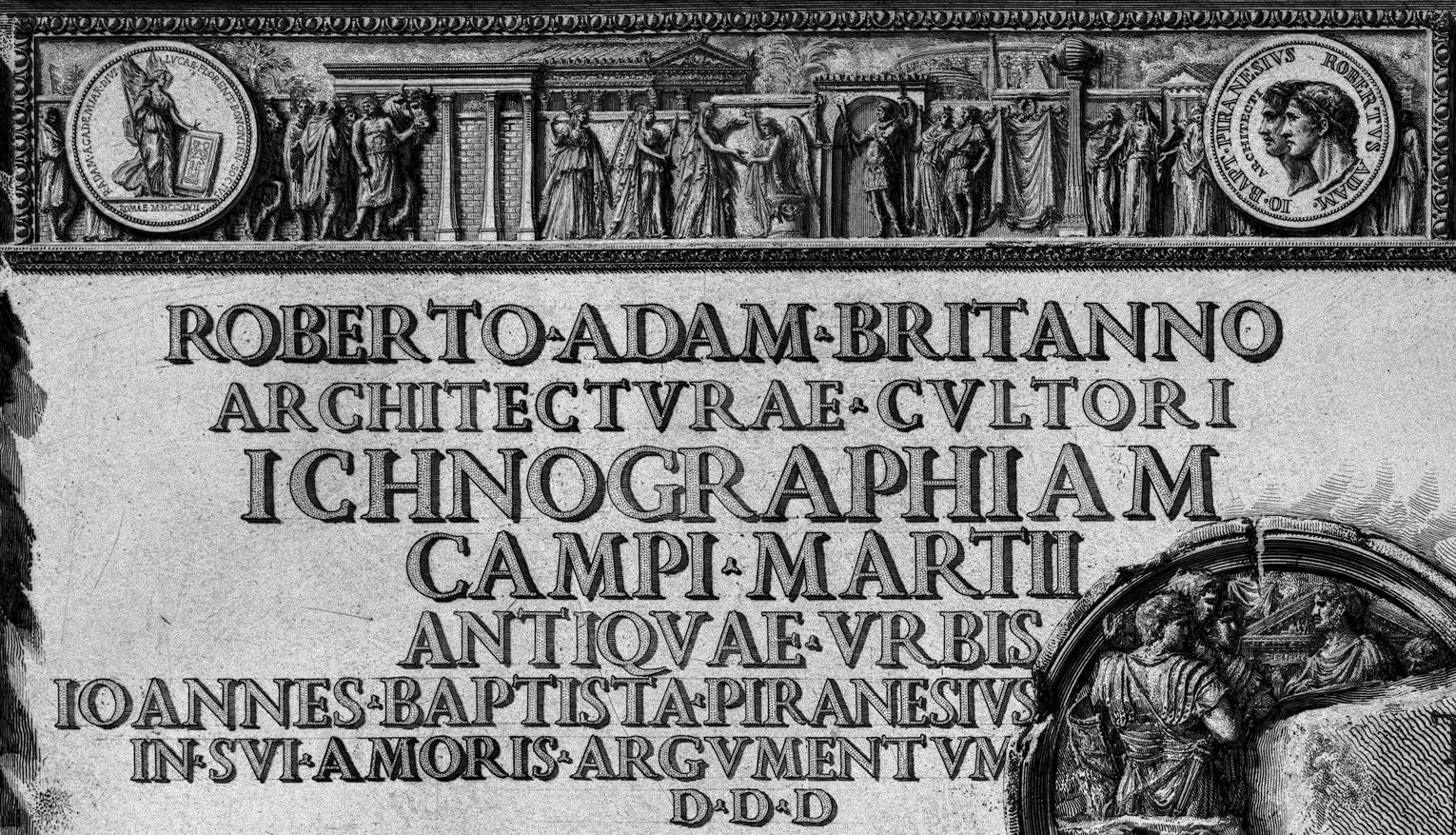piranesi |
1983 |
|
| During these years Piranesi's close friendship with the young Scottish architect Robert Adam was to provide an important source of encouragement in this speculative activity. In the Preface to the Antichità Romane of 1756 Piranesi had seized the opportunity once more to condemn the limited outlook of the contemporary architectural profession. In this respect he clearly recognised in Adam a kindred spirit who also saw the creative potential of archaeology as well as its practical application to the problems of modern design. A visual tribute to Adam was significantly included in the Via Appia fantasy which, as a secondary frontispiece to Volume II of the Antichità, opens a section demonstrating the imaginative range of Roman funerary architecture.10 Meanwhile Adam's correspondence at this time reveals that Piranesi was already working on a giant master-plan which was originally intended to be an important part of the Antichità and which Piranesi had resolved to dedicate to the Scot.11 This plan was none other than the Ichnographia which Piranesi was to separate from the Antichità and eventually to publish as the key element in the Campo Marzio treatise, also dedicated to Adam, in 1762.12 This plan's lengthy gestation is indicated by the fact that Adam records seeing Piranesi at work on the dedicatory tablet of the Ichnographia in his studio during April 1757 when the Scot paid a farewell visit before returning to Britain.13 This is independently corroborated by the date MDCCLVII appearing on the left-hand medallion in this tablet. |
|
|
10 According to Adam, writing in April 1756, «in one of the frontispieces
representing the Appian Way in all its ancient splendour, with ail the mausoleums of the Consuls, Emperors &ca., he [Piranesi] has taken the occasion to put in Ramsay's name and mine, with our Elogiums, as if buried in these tombs» (J. Fleming, Robert Adam and his Circle in Edinburgh and Rome, London 1962, p. 207). Adam's relationship with Piranesi is also discussed in " D. Stillman, Robert Adam and Piranesi in Essays Presented to Rudolf Wittkower (ed. D. Fraser), London 1967, pp. 197 ff. which also illustrates one of two architectural fantasies sketched by Piranesi for the Scottish architect, now in the Soane Museum, London.
|
|
|
|
|
|
Quondam © 2021.10.24 |
